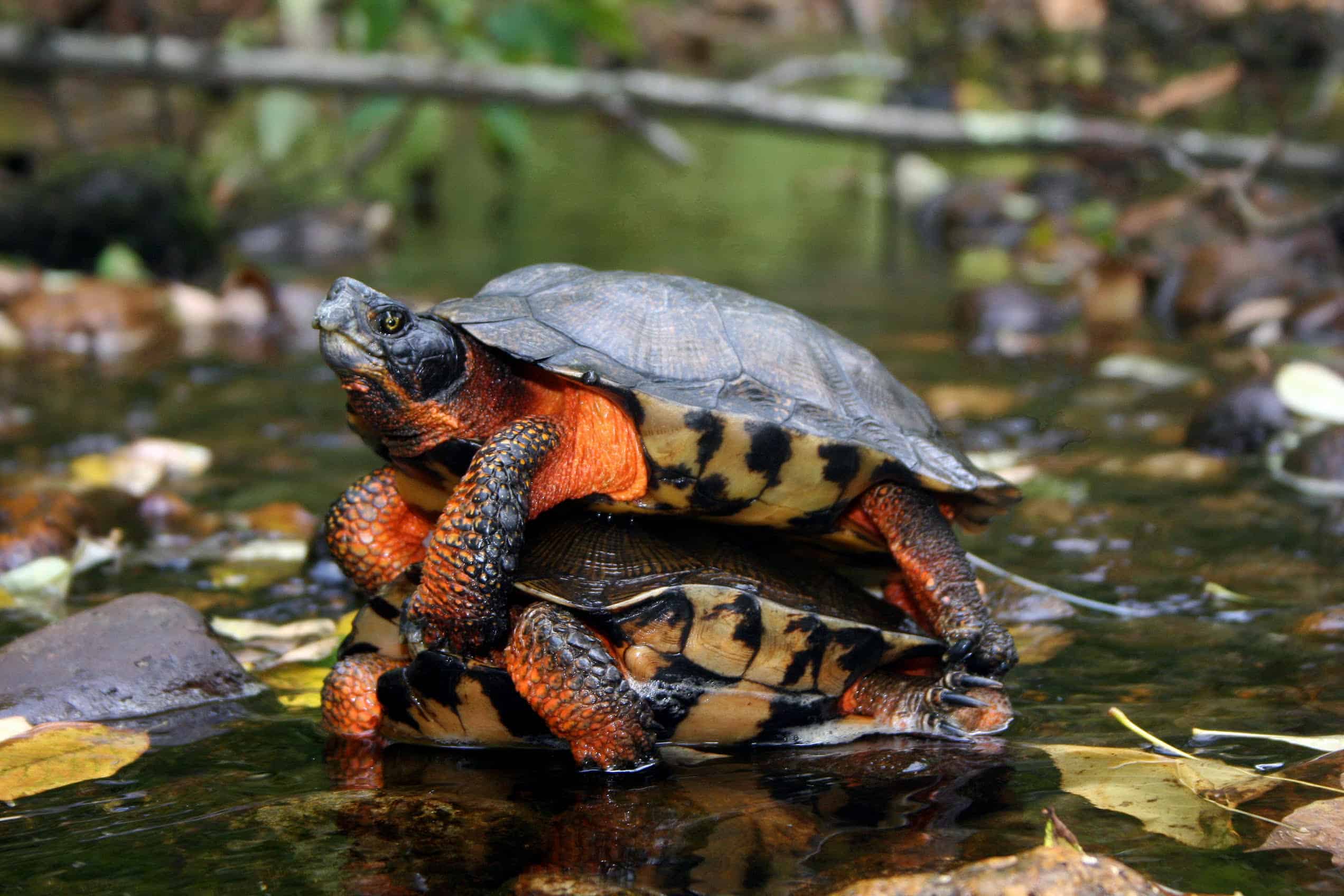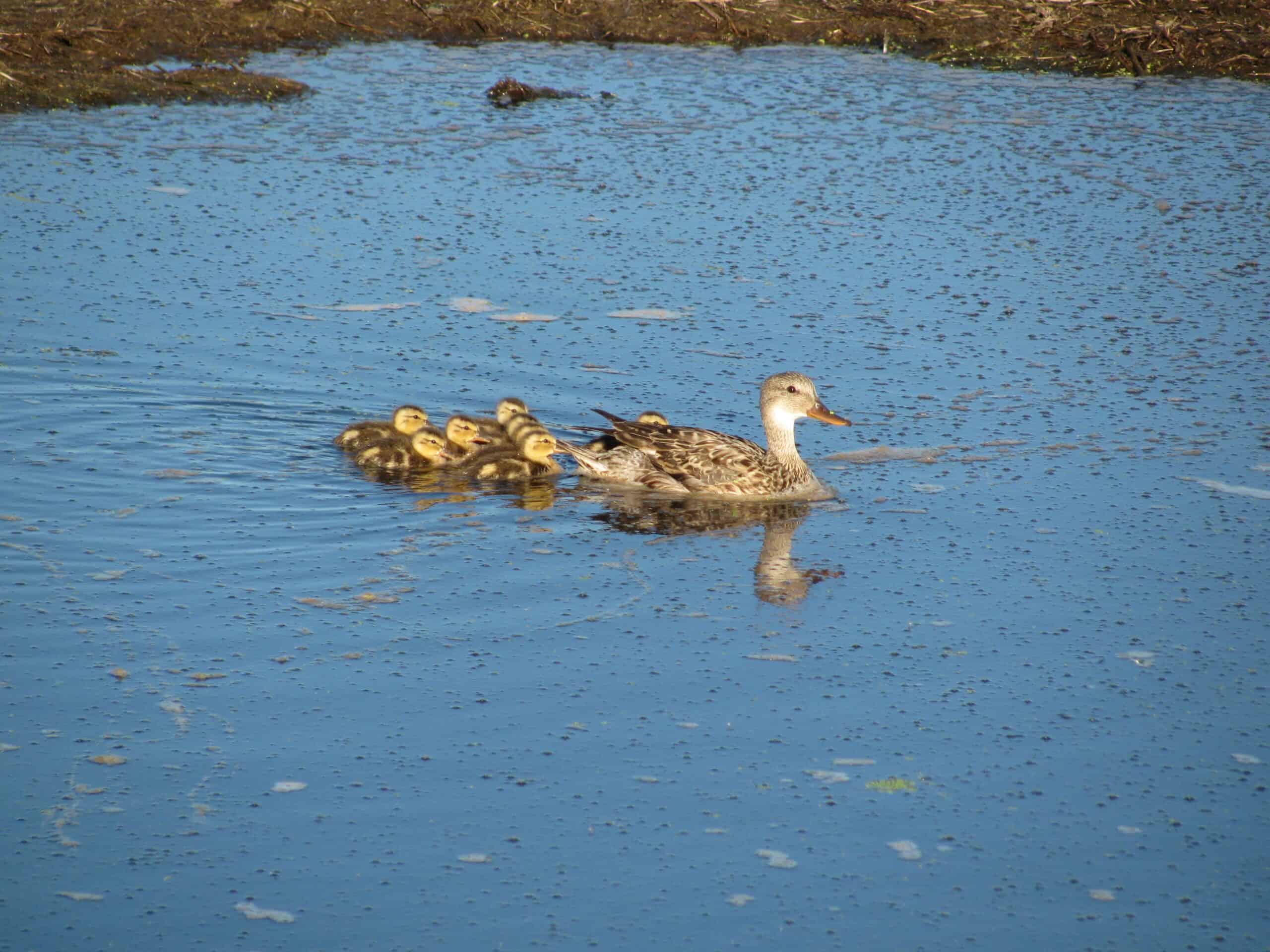Share this article
Wood turtles have lost more than half of their suitable habitat
Wood turtles have likely lost more than half of their suitable habitat over the last century and a half.
Habitat changes from urbanization and agriculture have caused researchers to become concerned about the species. In fact, the U.S. Fish and Wildlife Service is currently reviewing wood turtles (Glyptemys insculpta) for listing under the U.S. Endangered Species Act, while north of the border, the reptiles are considered threatened under Canada’s Species at Risk Act.
In a study published recently in Biological Conservation, lead author Lisabeth Willey, a professor of conservation biology at Antioch University, and her colleagues wanted to find out some of the best areas where conservationists might focus their efforts to restore the reptiles’ habitats.

Wood turtles are doing better in some areas of their range than others. Credit: Mike Jones
To do so, they studied just how much the current distribution has changed from historic levels in the United States until today. They used current surveys and records to learn more about wood turtle distribution, then compared that to databases of past numbers gathered in the states where they are found, stretching roughly from Virginia to Maine. Willey’s team also gathered information from records kept by individual biologists and museums.
After an extensive process of combining the data into a cohesive database, the team came up with information on turtles from roughly 150 years ago up until 2013. For each sighting, the researchers determined the different climate and environmental characteristics of the waterways where the turtles were found. For all surveyed stream sections, they also noted forest cover, urbanization or the presence of agriculture.
For starters, the data showed that wood turtle preferences aren’t the same in all areas due to different environmental and climate conditions. In Virginia, Pennsylvania, West Virginia and Maryland, for example, wood turtles prefer steeper streams than in the northern areas.
In northern areas, average winter temperatures at streams were -5 degrees Celsius in Virginia compared to -15.7 degrees Celsius in Maine. Willey and her colleagues also found wood turtles suffered the most habitat loss around highly urbanized areas between Boston and New York, or along the Interstate 95 corridor that stretches from Maine to Florida. Meanwhile, rural areas in northern New York state or in Maine have much more intact landscape for the reptiles.

Turtles have different climate and habitat preferences in different parts of their range. Credit: Mike Jones
They also found that landscapes that might be suitable for wood turtles due to their proximity to streams are degraded as a result of development or agriculture.
“We estimate that 58% of the suitable stream habitat has landscape cover that is not suitable for wood turtles,” Willey said, meaning that more than half of the landscape that might have been suitable historically is no longer available for the reptiles.
Landscape even relatively far away from streams can influence wood turtle presence. While wood turtles usually stay within roughly 300 meters of streams, landscape type could affect their habitat up to five kilometers away, they found. In other words, if the landscape was degraded five kilometers from a stream, there was much less chance of wood turtle presence.
Willey said that this information can give conservationists a good idea about the scale of protection needed to ensure good habitat for wood turtles. “Just protecting the stream corridor doesn’t do it,” she said.
This cohesive examination of wood turtle habitats can also inform wildlife managers about the best places to protect the reptiles.
Header Image: Turtles have different climate and habitat preferences in different parts of their range. Credit: Mike Jones








